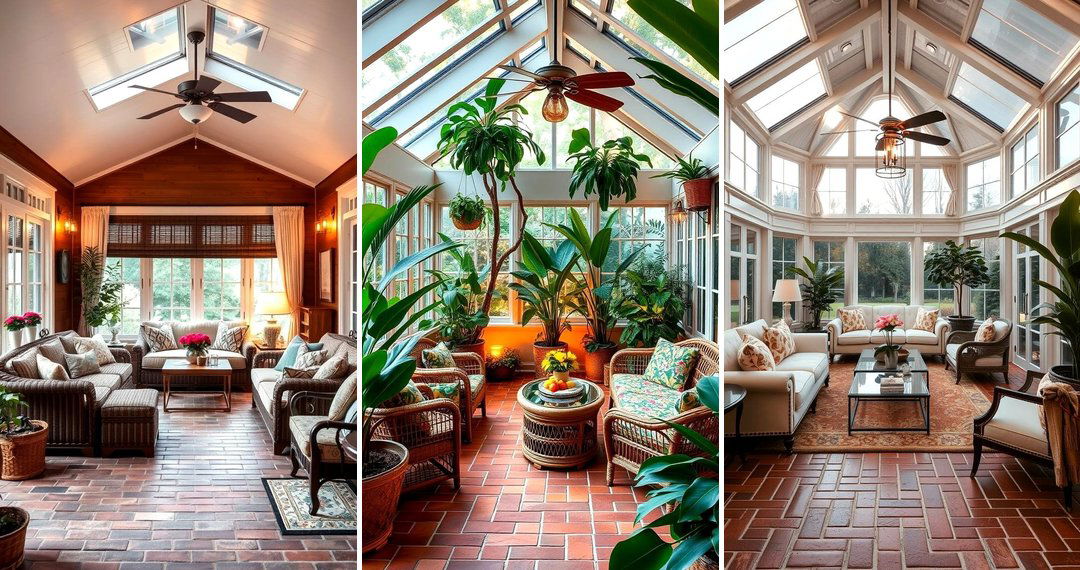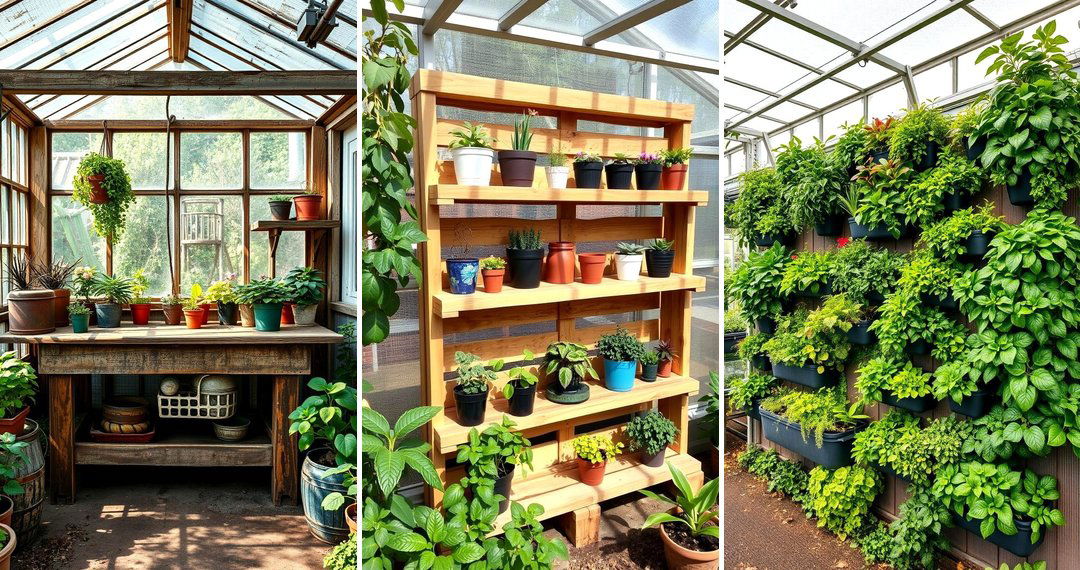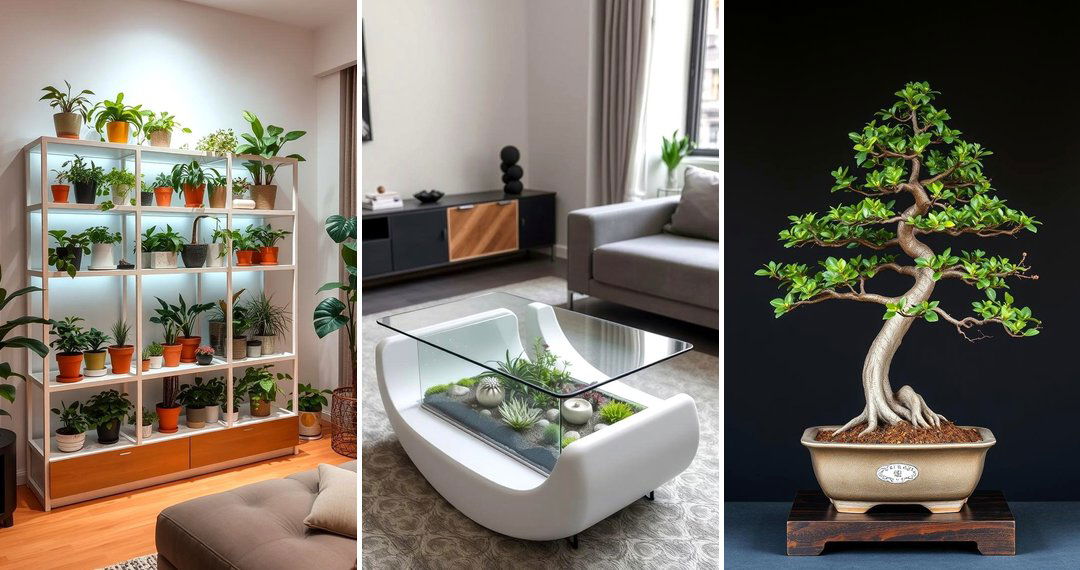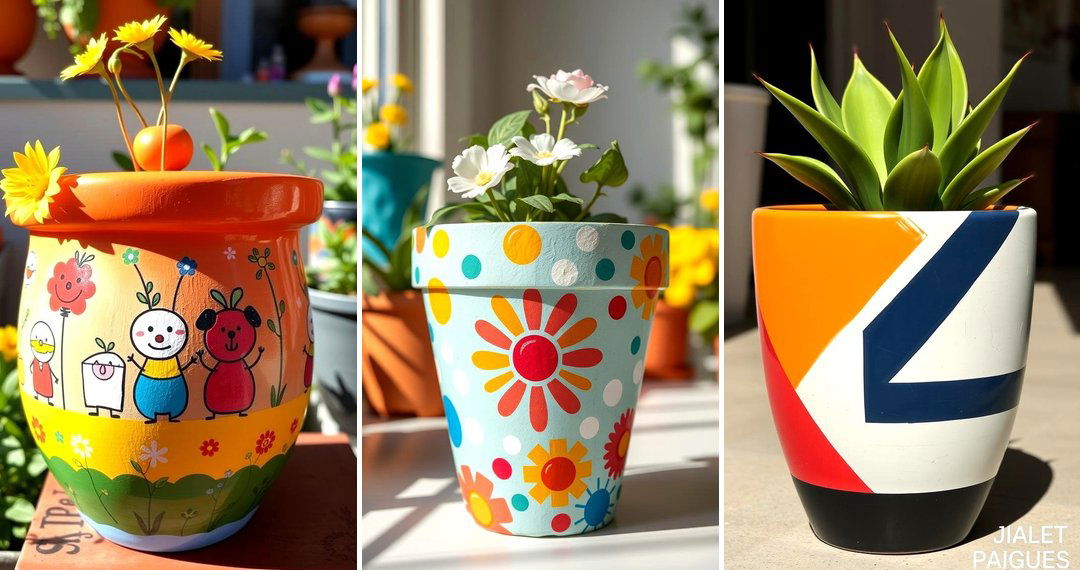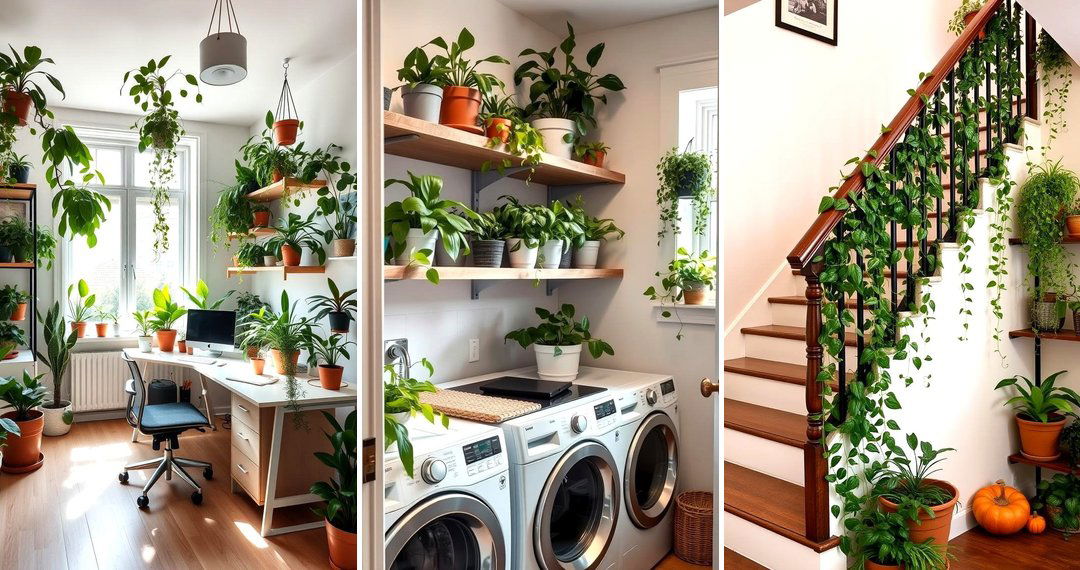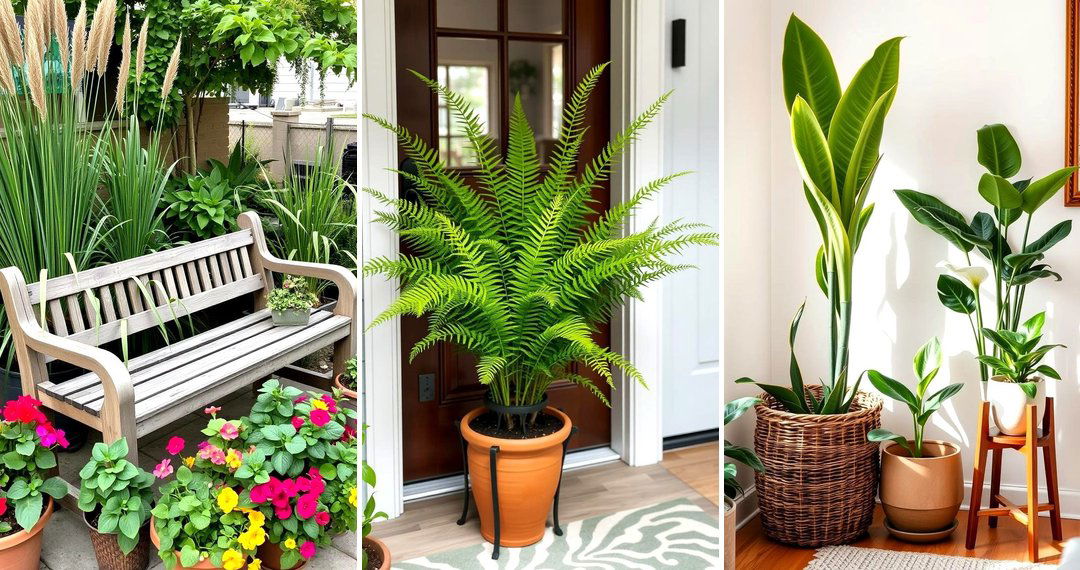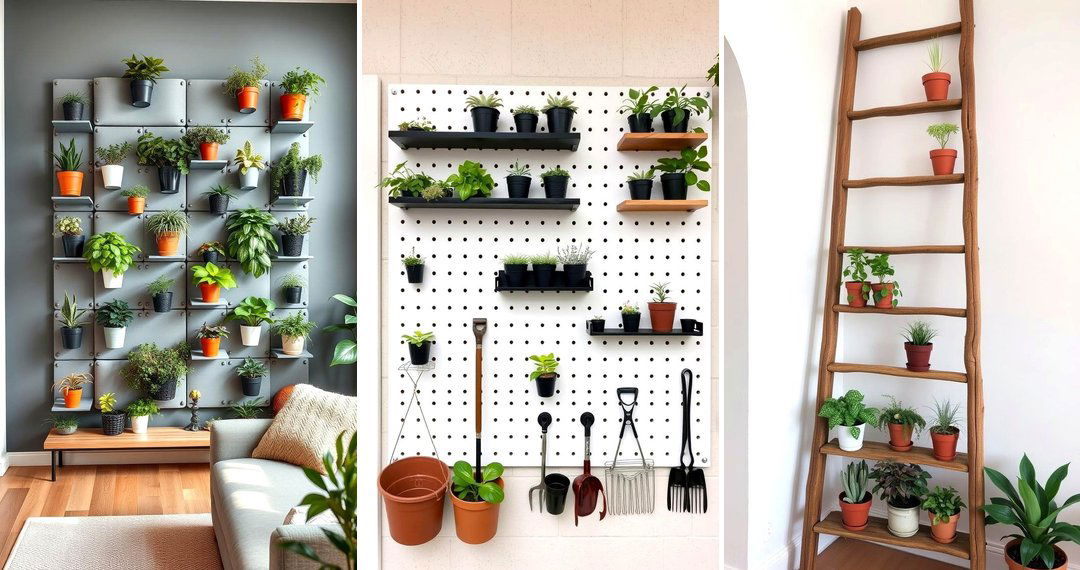Terrarium Ideas offer a captivating way to bring miniature ecosystems into your living spaces. These self-contained gardens provide a unique opportunity to cultivate greenery with minimal maintenance, making them perfect for both seasoned plant enthusiasts and beginners alike. The beauty of a terrarium lies in its ability to mimic natural environments on a small scale, creating a tranquil and visually appealing focal point in any room. Explore the following innovative terrarium ideas to discover the perfect green oasis for your home or office, and let your creativity flourish as you design your own miniature world.

1. Desert Oasis Terrarium

Consider crafting a desert terrarium that captures the stark beauty of arid landscapes. This type of terrarium thrives with succulents and cacti, which are well-adapted to dry conditions and require minimal watering. For a realistic touch, incorporate layers of sand in varying hues, along with small rocks and pebbles to mimic a natural desert floor. The key benefit here is low maintenance; these plants are drought-tolerant and prefer bright, indirect sunlight. This makes a desert terrarium an ideal choice for busy individuals or those new to plant care, offering a touch of natural elegance without demanding constant attention.
2. Lush Woodland Terrarium
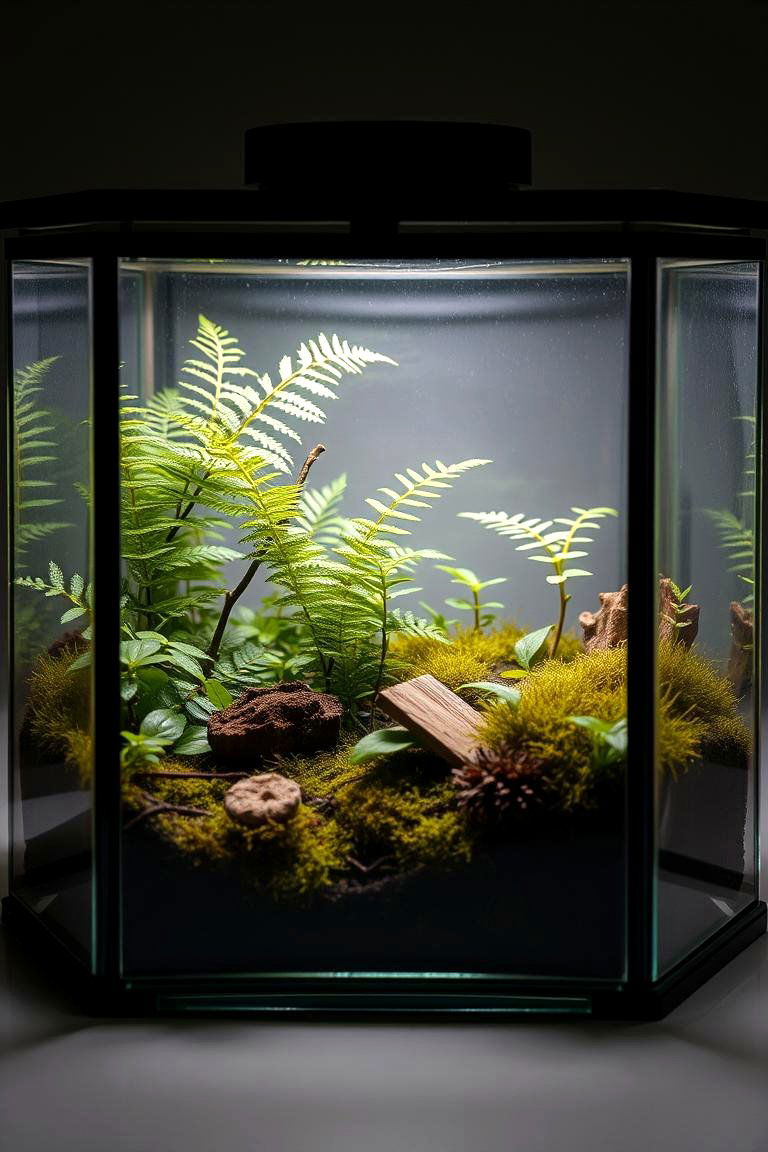
Bringing the serenity of a forest indoors is easily achievable with a woodland terrarium. This setup favors moisture-loving plants like ferns, mosses, and small, shade-tolerant flowering plants. To recreate a forest floor, use a base of potting soil mixed with peat moss, and add elements like small pieces of bark, twigs, and leaf litter for an authentic feel. The high humidity within a closed terrarium mimics the undergrowth of a forest, promoting healthy growth. This type of terrarium offers a calming visual appeal and can thrive in areas with lower light, making it a versatile choice for various indoor environments.
3. Vibrant Tropical Terrarium

What about creating a tropical terrarium that bursts with color and life? This vibrant ecosystem thrives with high humidity and warmth, making it suitable for tropical plants like orchids, bromeliads, and small, colorful foliage plants. Incorporate a substrate that retains moisture, such as sphagnum moss and orchid bark. Misting regularly will help maintain the necessary humidity levels. The benefits of a tropical terrarium include its stunning visual appeal and the opportunity to cultivate exotic plants that might not otherwise thrive indoors. It brings a touch of the rainforest to your home, creating a lively and engaging display.
4. Charming Succulent Terrarium

For those who appreciate the unique shapes and textures of succulents, a dedicated succulent terrarium is a fantastic option. Unlike desert terrariums, this setup can incorporate a wider variety of succulents, showcasing their diverse forms and colors. Use a well-draining soil mix specifically designed for succulents and ensure good ventilation if using a closed container to prevent excess moisture buildup. The key advantage is the ease of care; succulents are generally low-maintenance and require infrequent watering. This makes a succulent terrarium a stylish and practical addition to any space, offering a touch of natural artistry.
5. Elegant Air Plant Terrarium
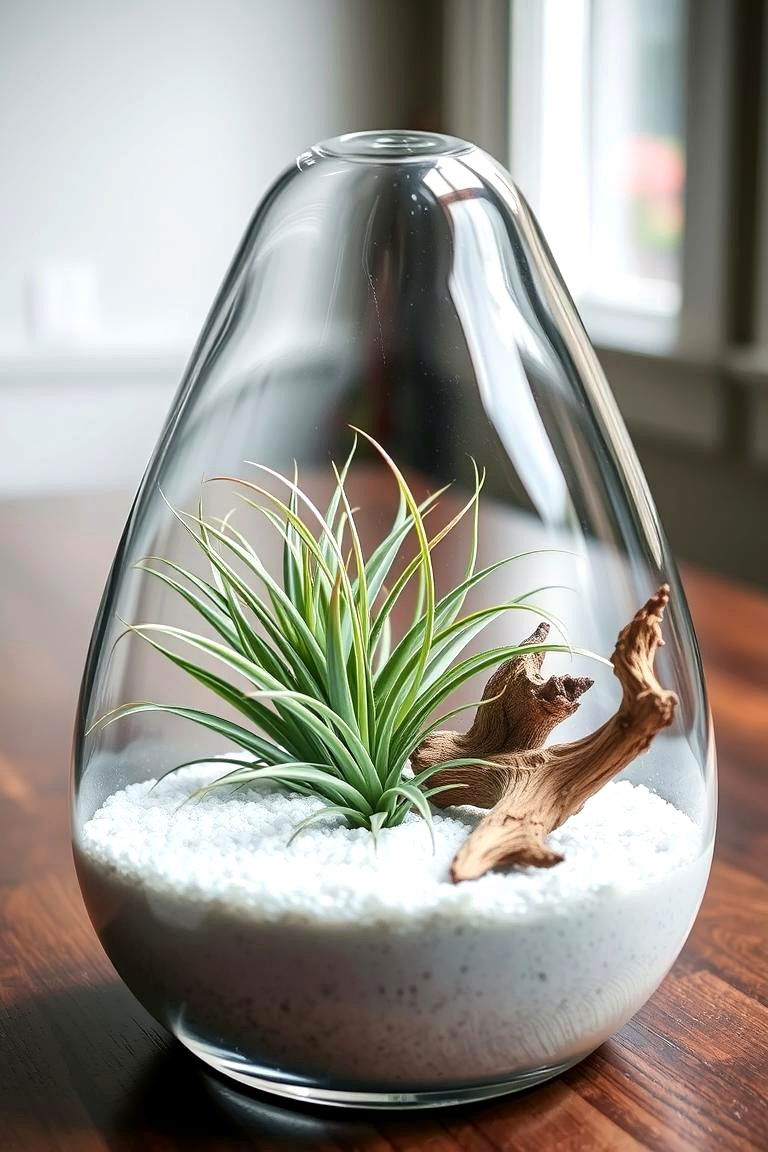
Take a minimalist approach with an air plant terrarium, highlighting the unique beauty of Tillandsia. These fascinating plants don't require soil and absorb moisture and nutrients from the air. Display them in glass containers with interesting shapes, perhaps with decorative sand, pebbles, or pieces of driftwood for added visual appeal. The primary benefit of an air plant terrarium is its versatility and ease of maintenance. Simply mist the air plants a couple of times a week and provide bright, indirect light. This creates a modern and airy display that adds a touch of botanical elegance without the fuss of traditional planting.
6. Tranquil Moss Terrarium

Another calming option is a moss terrarium, which showcases the velvety textures and vibrant greens of various moss species. Moss thrives in humid environments, making a closed terrarium ideal for this setup. Use a base of damp sphagnum moss or a soil mix suitable for mosses. Adding small stones or pieces of wood can enhance the natural aesthetic. The benefits of a moss terrarium include its ability to create a serene and peaceful atmosphere. Mosses also act as natural air purifiers, contributing to a healthier indoor environment. Their low-light tolerance makes them suitable for various locations in your home.
7. Whimsical Fairy Garden Terrarium
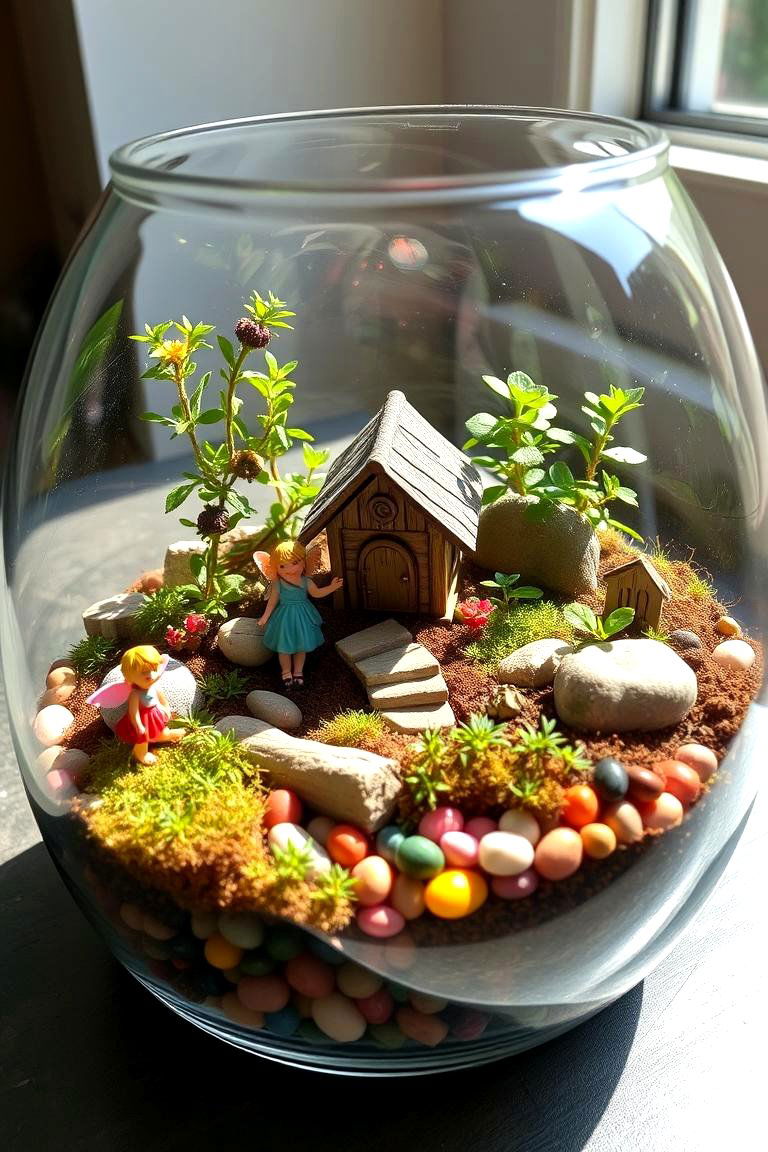
One particularly enchanting idea is to create a fairy garden terrarium, sparking imagination and adding a touch of magic to your space. Incorporate miniature figurines, tiny houses, and whimsical accessories among small, suitable plants like creeping thyme or baby tears. Use a standard potting mix and ensure the plants chosen are compatible with the terrarium's environment. The key benefit of a fairy garden terrarium is its ability to bring joy and creativity into your home. It's a fun project for all ages and creates a delightful miniature world to admire.
8. Relaxing Beach Terrarium

By bringing the essence of the seaside indoors, a beach terrarium can evoke feelings of tranquility and relaxation. Use layers of sand in different textures and colors to mimic a shoreline. Incorporate small seashells, pieces of driftwood, and perhaps a tiny starfish or two. For plant life, consider air plants or small succulents that can tolerate drier conditions. The primary advantage of a beach terrarium is its ability to create a calming and visually appealing display that reminds you of the ocean. It requires minimal plant care, focusing more on the aesthetic arrangement of natural elements.
9. Serene Zen Garden Terrarium
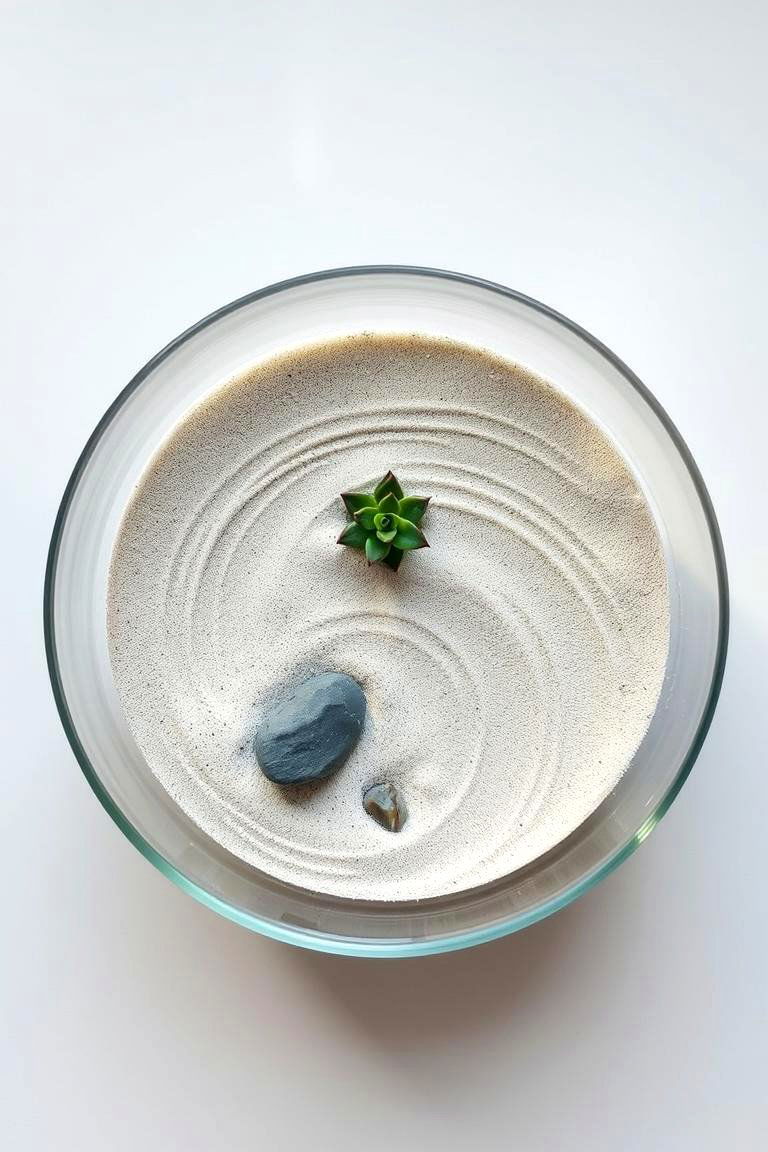
To cultivate a sense of peace and mindfulness, consider a Zen garden terrarium. This minimalist approach focuses on carefully arranged elements like sand, small rocks, and perhaps a single, small plant like a bonsai or succulent. The act of raking the sand into patterns can be a meditative practice. The benefit of a Zen garden terrarium is its ability to promote relaxation and focus. It serves as a beautiful and interactive piece of decor that encourages a moment of stillness in your day.
10. Aromatic Herb Terrarium

For those who enjoy fresh flavors, an herb terrarium can be both practical and visually appealing. Choose small, slow-growing herbs like thyme, oregano, or mint, which can thrive in a controlled environment. Ensure good drainage and provide adequate light, ideally near a sunny window. The key benefit of an herb terrarium is having fresh herbs readily available for cooking, adding both flavor and fragrance to your home. It's a compact and attractive way to grow your own culinary essentials.
11. Intricate Miniature Landscape Terrarium
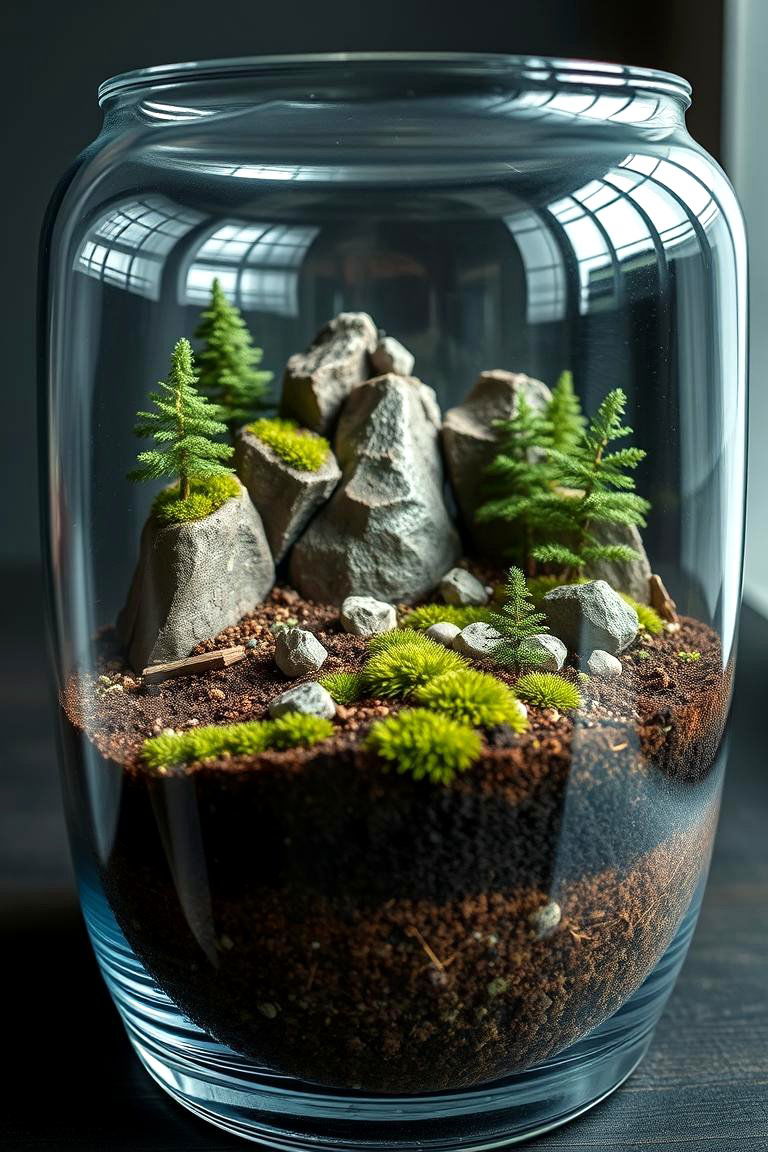
Looking to create a truly captivating display? A miniature landscape terrarium allows you to recreate a specific natural scene, such as a mountain range or a forest valley, in miniature. Use varying soil levels, small rocks, and appropriately sized plants to build the landscape. Mosses, small ferns, and groundcovers work well for this purpose. The advantage of this type of terrarium is its intricate beauty and the opportunity to showcase your creativity. It becomes a living work of art that can be a fascinating conversation starter.
12. Self-Sustaining Closed Terrarium

Take a hands-off approach with a closed terrarium, which aims to create a self-sustaining ecosystem. The sealed environment traps moisture, which then condenses and waters the plants, mimicking the water cycle. Choose plants that thrive in high humidity and low light, such as ferns, mosses, and small tropical foliage plants. The primary benefit is minimal maintenance; once established, a closed terrarium requires very little attention. It's a fascinating way to observe a miniature ecosystem at work.
13. Breathable Open Terrarium

Unlike closed terrariums, open terrariums allow for more air circulation, making them suitable for plants that prefer drier conditions, such as succulents and air plants. Choose a container with a wide opening and use appropriate soil or mounting materials for your chosen plants. The benefit of an open terrarium is its versatility and ease of access for occasional watering and maintenance. It allows you to showcase plants that might not thrive in the humid environment of a closed terrarium.
14. Eye-Catching Hanging Terrarium
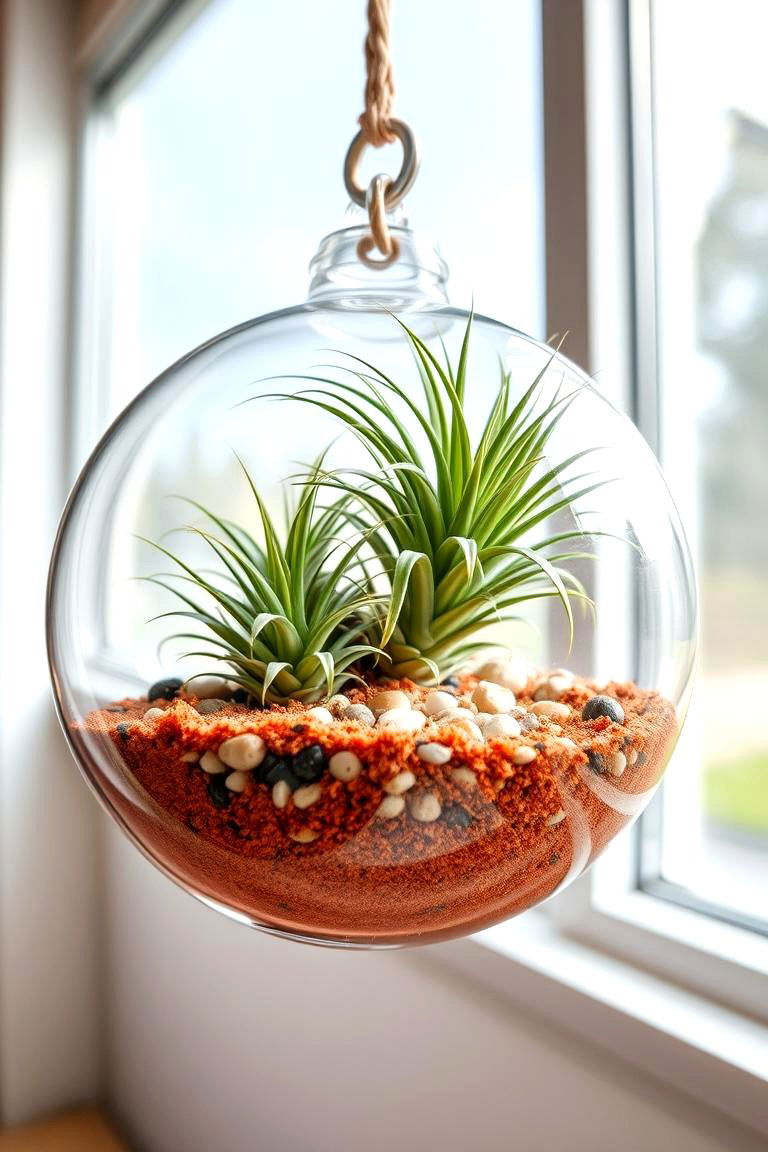
To add a unique visual element to your decor, consider a hanging terrarium. These can be glass globes, geometric shapes, or other creative containers suspended from the ceiling or a bracket. They work well with air plants, small succulents, or trailing plants that can cascade downwards. The key advantage of a hanging terrarium is its space-saving design and the interesting visual perspective it offers. It can add a touch of whimsy and greenery to areas that might otherwise be unused.
15. Space-Saving Wall-Mounted Terrarium
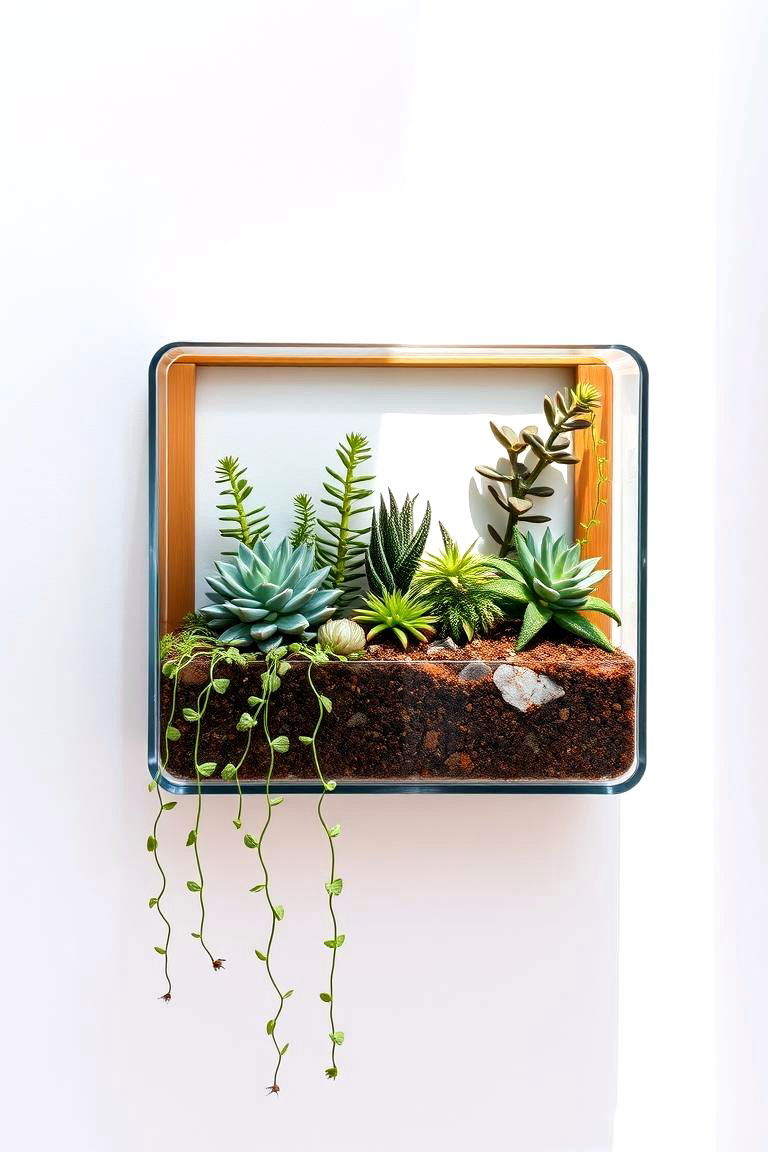
For those with limited surface space, a wall-mounted terrarium is an excellent solution. These can come in various shapes and sizes, often with a flat back for easy mounting. They are suitable for air plants, small succulents, or even trailing plants that can spill over the edges. The benefit of a wall-mounted terrarium is its ability to bring greenery to your walls, acting as a living piece of art. It's a stylish and practical way to incorporate nature into your home without taking up valuable shelf or table space.
16. Upcycled Bottle Terrarium

What about giving new life to an old bottle by turning it into a unique terrarium? Large glass bottles, such as wine carafes or decorative bottles, can be transformed into charming miniature gardens. This often requires some careful maneuvering to place plants and soil inside, using long tools. The benefit of a bottle terrarium is its sustainability and the unique aesthetic it offers. It's a creative way to recycle and create a personalized piece of decor.
17. Simple Jar Terrarium

For a straightforward and accessible terrarium project, use a simple glass jar. Mason jars, canning jars, or even old food jars can be used to create small, self-contained gardens. They are easy to assemble and can be adapted for various plant types, from mosses to small succulents. The key advantage of a jar terrarium is its simplicity and affordability. It's a great project for beginners and can be easily customized to fit any decor style.
18. Modern Geometric Terrarium
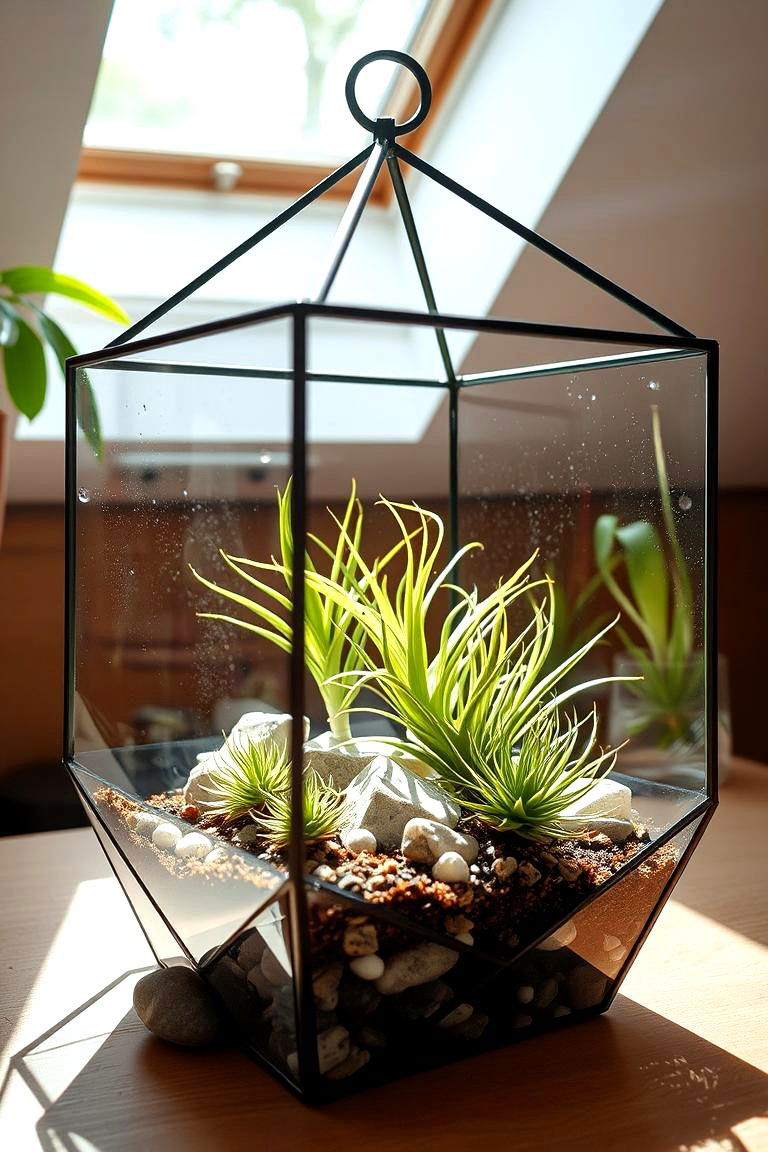
Adding a touch of contemporary style, geometric terrariums feature metal frames enclosing glass panels in various shapes like cubes, pyramids, or dodecahedrons. These modern containers beautifully showcase the plants inside, often air plants or succulents, creating a striking visual display. The benefit of a geometric terrarium is its modern aesthetic and its ability to elevate the presentation of your plants. It serves as a stylish and eye-catching decorative element.
19. Illuminated Lighted Terrarium
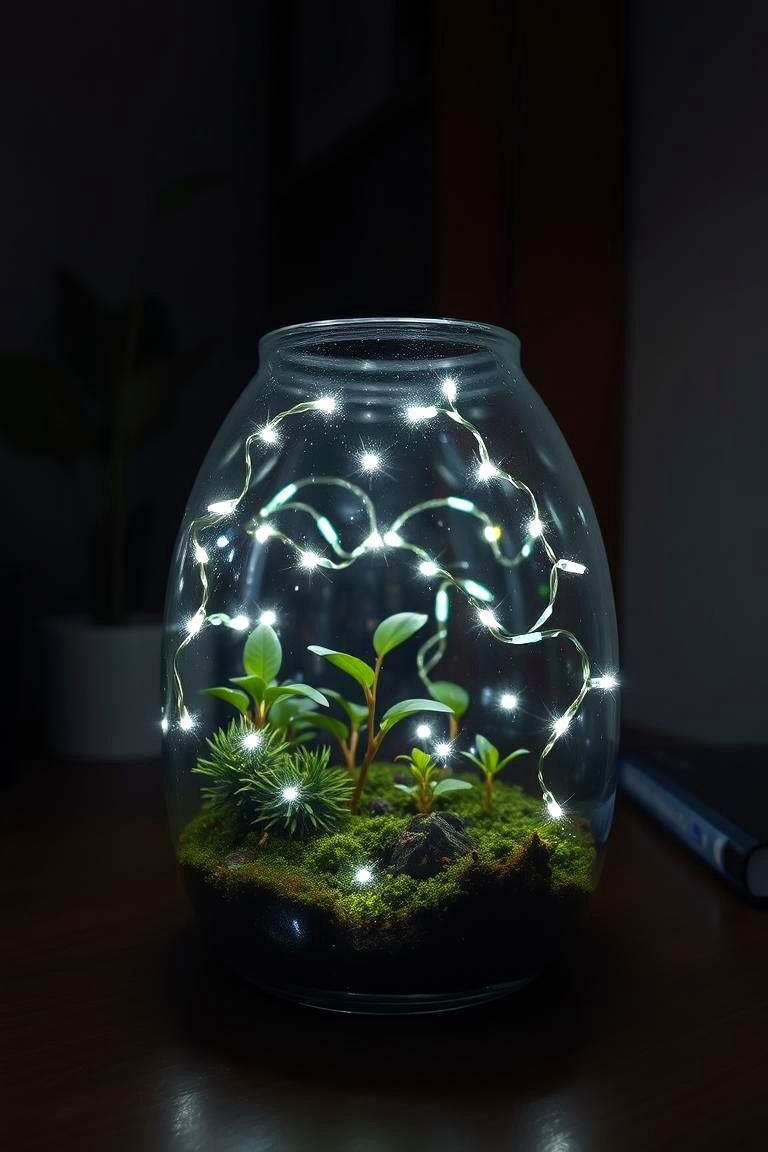
To add ambiance and highlight the beauty of your terrarium at night, consider incorporating a small LED light. This can be a battery-operated string of lights or a small spotlight directed at the terrarium. Lighted terrariums are particularly effective for showcasing intricate details and creating a magical glow. The advantage of this type of terrarium is its ability to enhance the visual appeal of your miniature garden, making it a captivating feature even in low-light conditions.
20. Versatile Paludarium Terrarium
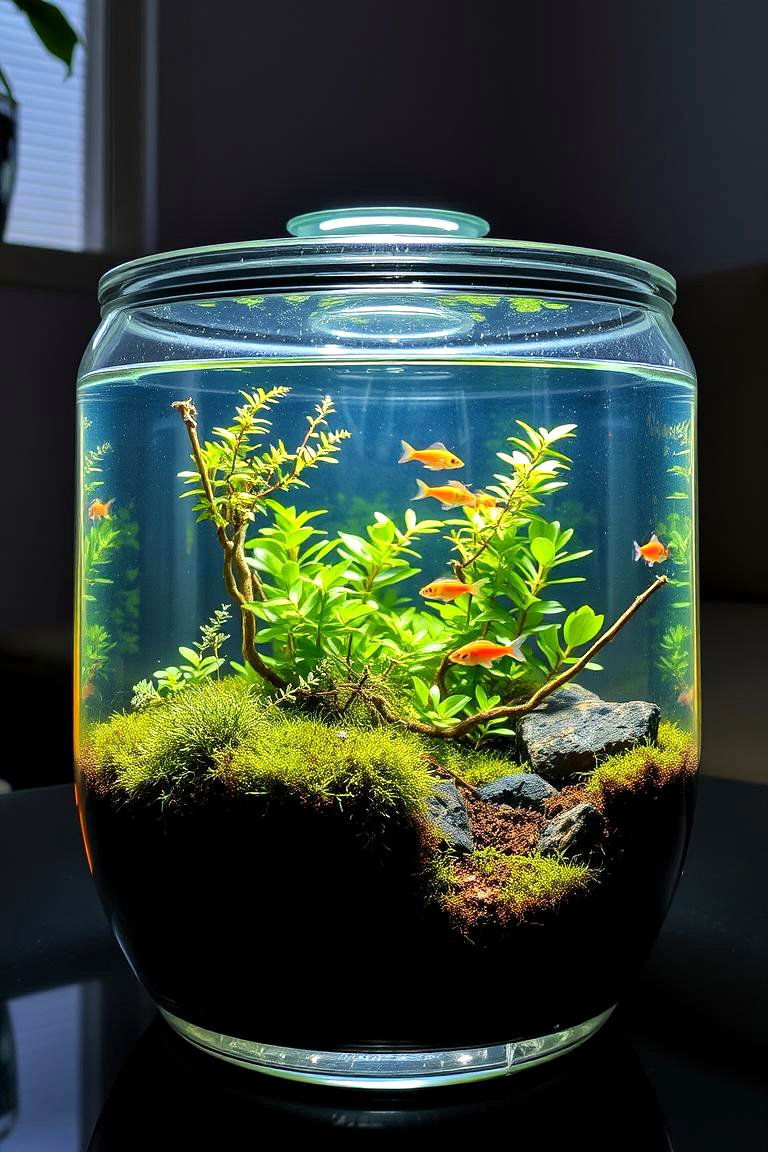
For a more dynamic and complex setup, explore the idea of a paludarium, which combines both terrestrial and aquatic elements. This type of terrarium can house plants that thrive in high humidity alongside small aquatic creatures like tiny fish or shrimp. It requires careful planning to create distinct zones for land and water. The benefit of a paludarium is its ability to mimic a more diverse natural environment, offering a fascinating and interactive display.
21. Educational Butterfly Terrarium

Consider creating a butterfly terrarium as an educational and engaging project. This involves cultivating specific host plants that caterpillars feed on, with the goal of observing the butterfly life cycle. Ensure the terrarium has adequate ventilation and is kept in a safe location. The primary benefit of a butterfly terrarium is its educational value, providing a hands-on learning experience about nature and metamorphosis. It's a wonderful project for families and classrooms.
22. Unique Carnivorous Plant Terrarium
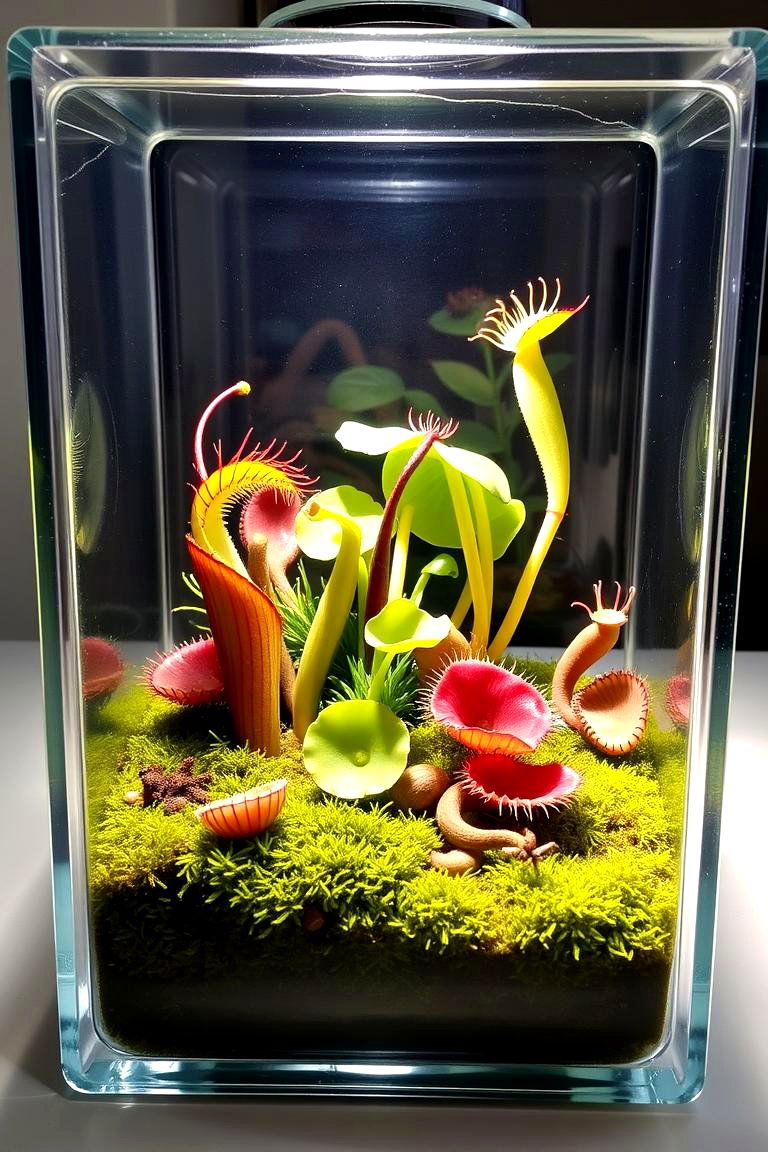
For a truly fascinating and unique terrarium, cultivate carnivorous plants like Venus flytraps, pitcher plants, or sundews. These plants require specific conditions, often including high humidity and rainwater or distilled water. A closed terrarium is often ideal for maintaining the necessary humidity. The benefit of a carnivorous plant terrarium is its novelty and the opportunity to observe these intriguing plants up close. It's a captivating display for those interested in the more unusual aspects of the plant kingdom.
23. Practical Seedling Starter Terrarium

For gardeners looking to get a head start on the growing season, a terrarium can serve as an excellent seedling starter. The controlled environment with high humidity helps seeds germinate and young seedlings establish themselves. Use a clear container with a lid and a suitable seed-starting mix. Provide adequate light once the seedlings emerge. The key benefit of a seedling starter terrarium is its practicality in helping you grow healthy seedlings before transplanting them outdoors.
24. Engaging Terrarium for Kids

Finally, consider a simple and engaging terrarium designed specifically for kids. This could involve easy-to-care-for plants like mosses or small succulents, along with fun additions like toy dinosaurs or colorful pebbles. The focus is on creating a hands-on project that teaches children about nature and responsibility. The benefit of a terrarium for kids is its ability to foster an interest in the natural world and provide a fun and educational activity.
Conclusion:
Exploring the diverse world of terrarium ideas reveals a multitude of ways to bring miniature ecosystems into our lives. From the low-maintenance desert terrarium to the intricate and educational butterfly terrarium, each offers unique benefits and aesthetic appeal. Whether you're drawn to the tranquility of a moss terrarium or the vibrant energy of a tropical setup, the possibilities are as boundless as your imagination. Embracing these terrarium ideas allows you to cultivate beauty, learn about nature, and create captivating green spaces within your own home.


